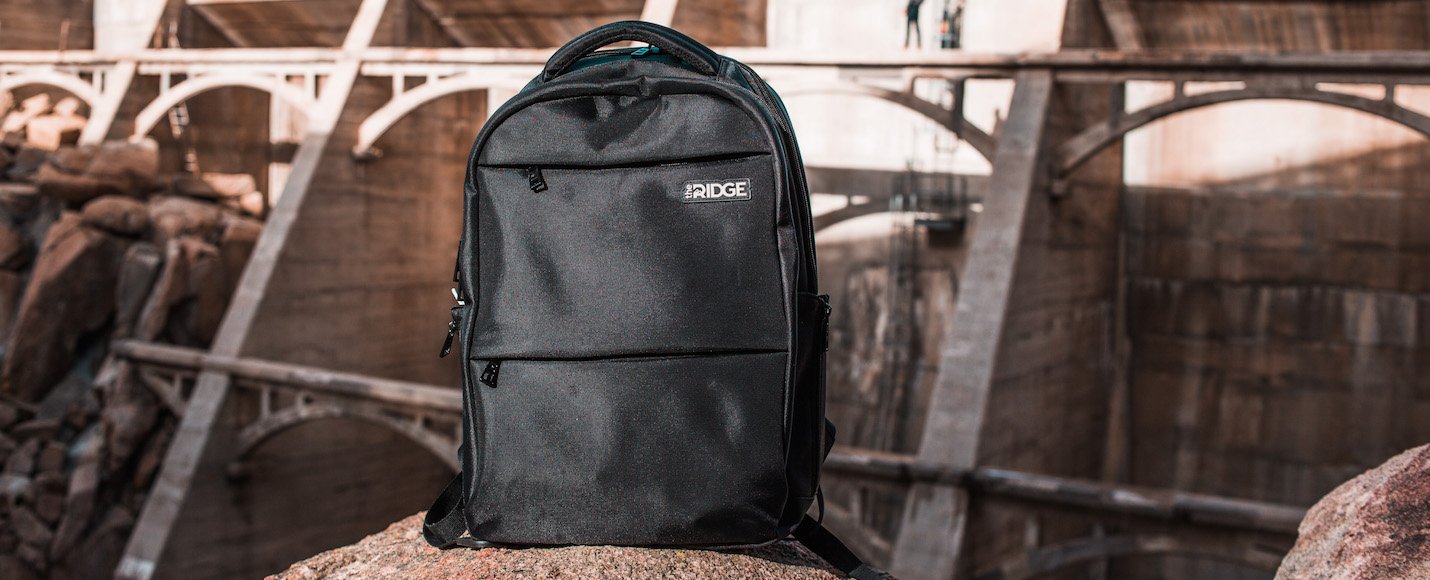
Everything you needed, you kept in one place—but you never wanted to keep too much inside it, because that would just make the backpack too heavy. Backpacks were lightweight, easy to understand, easy to use, and carried everything you need. For a student, if the values of wearing a backpack sound familiar, that’s probably because they’re the same values that you now value about your Ridge wallet.
Perhaps that’s why it’s not surprising that Ridge also sells the Ridge commuter backpack, a bookbag (or anything-bag) tailor-made for the working professional, with cool features like a waterproof nylon shell and two water bottle holders. This is a change from older days, when backpacks used to be reserved for students, while working adults presumably left them in the past, or passed them down to their kids. But let’s take a deeper look and figure out what it is about backpacks that has stood the test of time.

For older generations, backpacks were a symbol of youth. If you were an adult, you used a briefcase, a purse, or pretty much anything but a backpack. These days, however, you’re just as likely to find a backpack on a 31-year-old as you are on a fifth grader. What happened?
The obvious answer, of course, is that students are older than they used to be. Now that going to college is the norm, many kids continue using backpacks into their 20s. This continues even deeper into adulthood, as the same students go to graduate school, get PhDs, and so on. Meanwhile, it’s become increasingly accepted for older students—30s, 40s, or older—to start taking classes well after they’ve settled into an adult life. Backpacks are a ubiquitous part of school life, and naturally, this means that backpacks have started appearing in every age group.
Here’s the other key to the backpack’s success: if you need to carry stuff around, it’s really hard to find any method easier, more versatile, and requiring less maintenance. The design of a backpack is such that, by looping around both shoulders, it leaves the wearer’s arms entirely free to open doors, shake hands, give hugs, punch tickets, or anything else. In contrast, briefcases and purses often require being held, thus limiting movement—or, if looped on with a single strap, will often slip down on the wearer’s shoulder and require readjustment. In addition, the backpack sits so comfortably upon the wearer that it has the effect of “disappearing.” You can have a conversation with someone, and forget about the backpack on you, while briefcases will need to either be clutched, or set down.
Backpacks are also being designed more elegantly, out of better materials, and with the adult in mind—instead of being just for kids.
For example, take the Ridge commuter backpack. Not only is it waterproof, but it has features directly targeted at a working professional, such as containing a shock-resistant laptop holder, an RFID-blocking pocket, and a power bank pocket with external an USB port. Backpacks are in, and they’re going to stay in: do you have the right one for your needs?
The backpack is also the most versatile carrying mechanism out there, due to the space of its pockets. Sure, you can load a backpack full of books. But if you want to go the gym later, you also have the option of putting your gym clothes and water bottle in there. If you’re going on a weekend camping trip, everything you need can fit in a backpack. That’s hard to beat.Though every student has a backpack, not every backpack is used by a student. For whatever the reasons might be, the 21st century has seen many working professionals ditching the old-fashioned briefcases of the past, in favor of retaining their old college backpacks (or new backpacks) for their documents, files, and so on.